If you are anything like me, understanding depth of field (DOF) was one of the biggest hurdles you had to overcome when learning the technical aspects of photography and shooting in manual mode. I would read explanations online, see links to calculators, hear it described as “shallow” or “deep” and couldn’t make sense of it all.
One day it just clicked. I’m not sure where or when, but I have a much better grasp on it now. I love using that knowledge to positively impact my own personal art as well as the art I create for my clients.
To be able to explain depth of field we have to start with defining certain terms. Then I will get into describing some things that affect depth of field.
Table to Contents
What is depth of field used for in photography?
DOF is a range of distances on either side of the focal plane that are “acceptably sharp.” (“Acceptably sharp” is where the confusion begins.) Another way to state this would be, the area behind and in front of your focus point that is in focus as well.
DOF portrays a 2D image as 3D
Even though every photograph is two-dimensional, it portrays a three-dimensional world. The distance between the camera and the subject and the distance behind the subject to the “end” of the photo is the “depth” of the photo. The amount of depth that is in focus is the depth of field.
What is a Focal Plane?
The focal plane is the distance from the camera at which the sharpest focus is attained.
In the photos below you can see how the focal plane affects how much of the photo is in focus. The first photo all the toys are in focus because they are on the same focal plane.
Everything before and behind is not in focus because it is not in the focal plane.
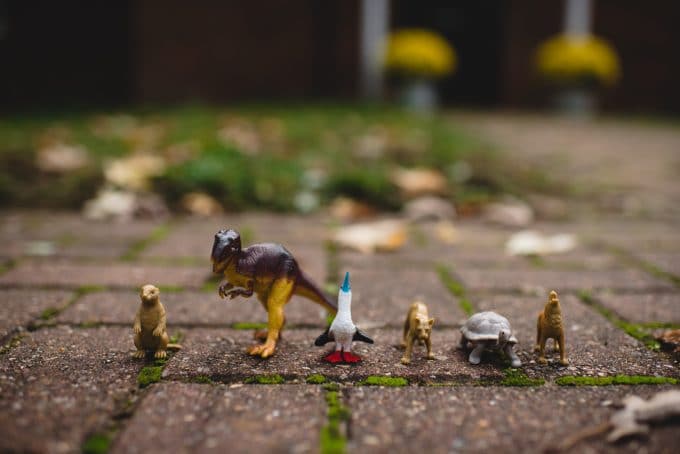
The next photo only the wolf is in focus. The other toys are on different focal planes. They have been moved to a different focal plane therefor they are not blurry. You can see this more clearly with the turtle, half of the turtle in in focus while the other half is on a different plane.
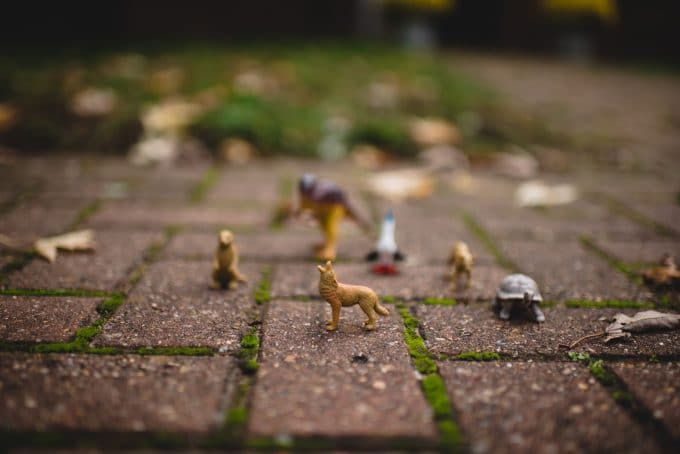
How do you capture Depth of Field (DOF) in photography?
Aperture
Aperture has a strong effect on the DOF as the aperture sets how much of the photo will be in focus.
When you are shooting more wide open (smaller aperture number) less of the photos will be in focus. Then you will have a narrow depth of field where the background is blurred.
Read more: Aperture- The Basics
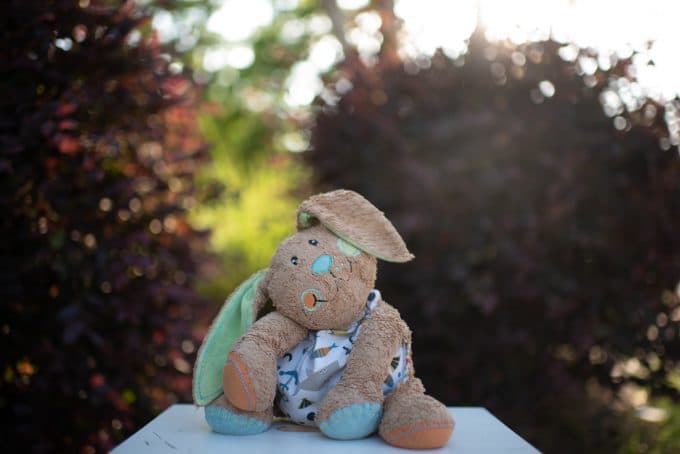
In each of the photos below you can see that the focus is on the bunny but how blurry the background is (DOF) changes drastically depending on the aperture.
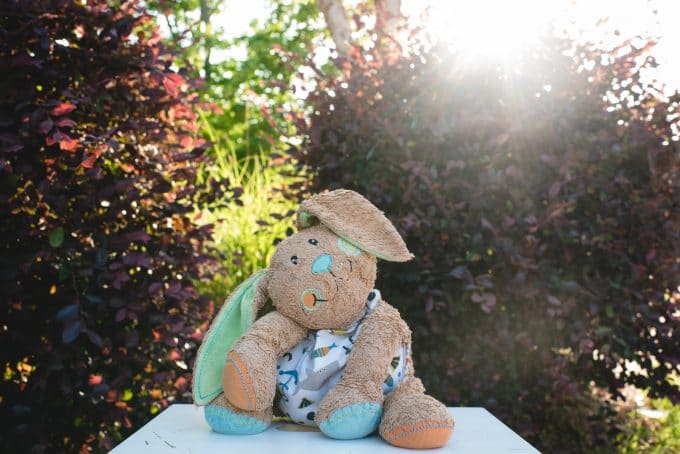
This image has more of the bushes in focus whereas with the more wide open aperture they are very blurred out.
Focal length
Focal length can affect the depth of field as well since the longer you focal length the more narrow your depth of field is.
Focal length is determined by your lens.
You can see in the photos below how when at the same aperture the photo with the wider focal length has less depth of field.
Here is a whole Camera Lens Series that breaks down different focal lengths and the pros and cons for each one.
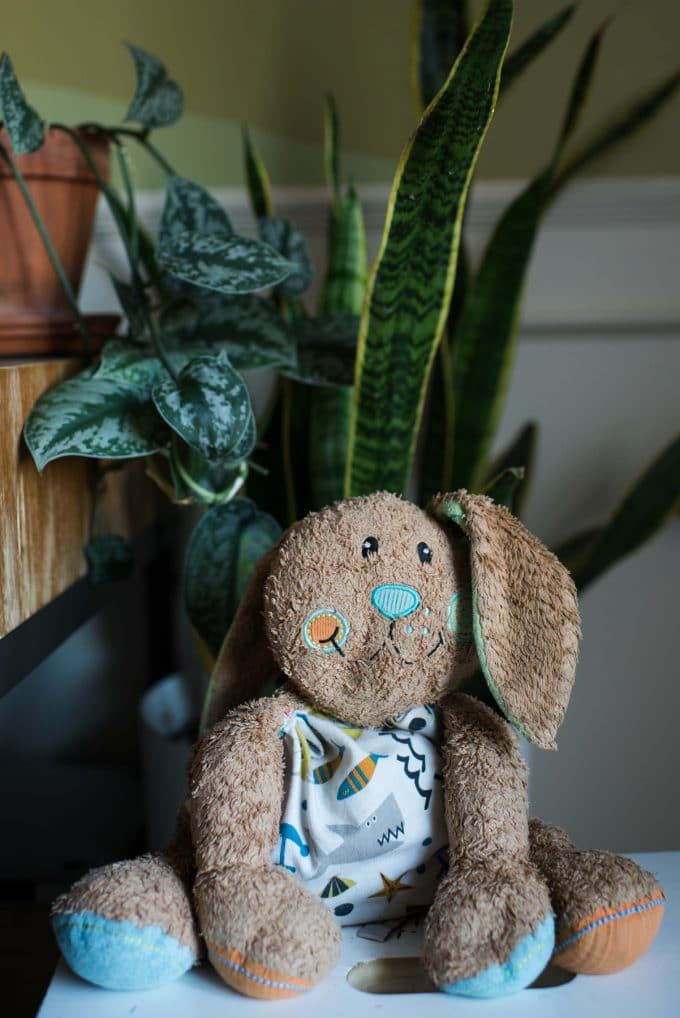
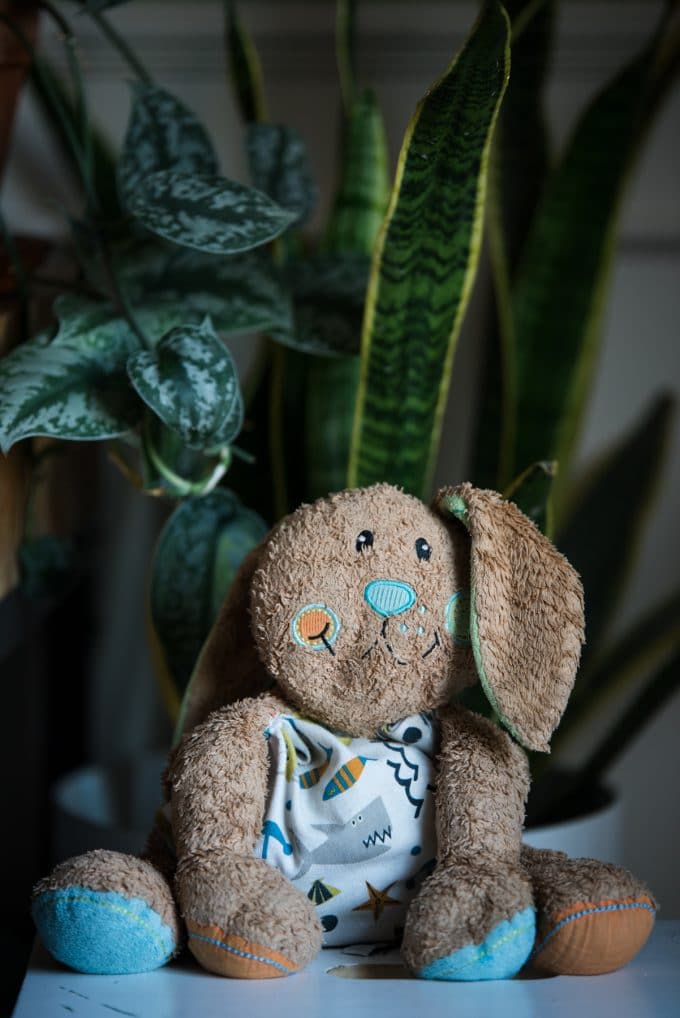
As you can see from the example above the 200mm lens really compressed DOF. Even though these images were both shot at the exact same place this lens makes the subject and background seem more pushed together.
If you are struggling to fit everything in the frame is it because you have crop sensor? See here: Everything you Need to Know About Crop Sensor vs Full Frame
Distance from background
Another factor that comes into play with depth of field is how far your subject is from the background.
In fact, if you are shooting with your kit lens this is a great trick to give you a more narrow depth of field when you feel restricted by how wide your aperture can go.
The below photos were taken with the same settings and same focal length. The only difference is I moved the stool closer to the plant in the second photo.
You can see it does not have as narrow of a depth of field (blurry background) as when the subject is further away.
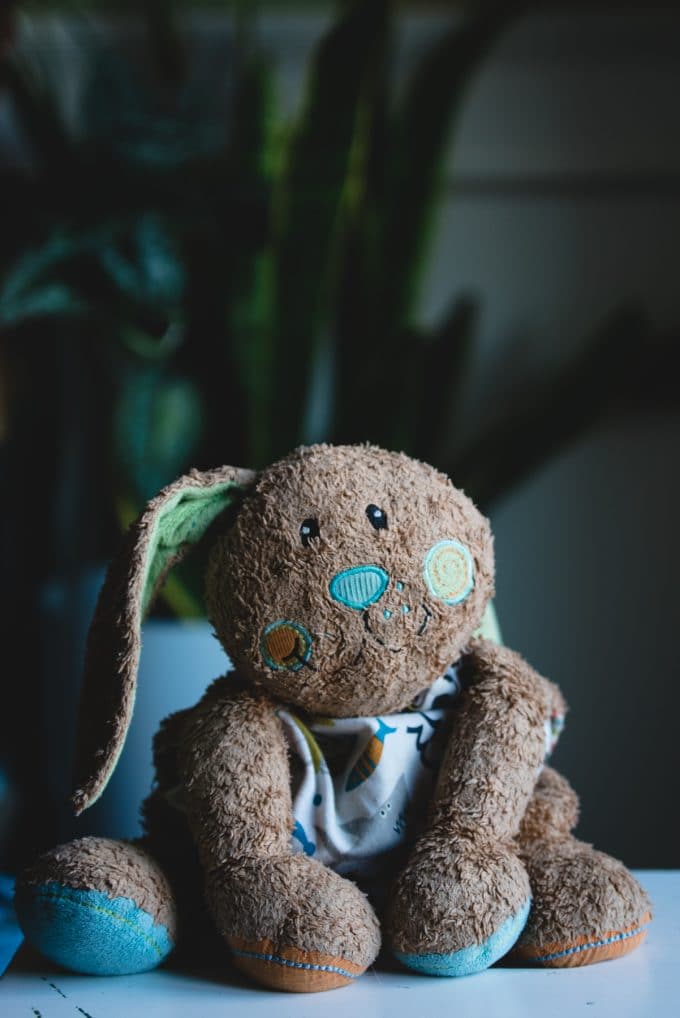
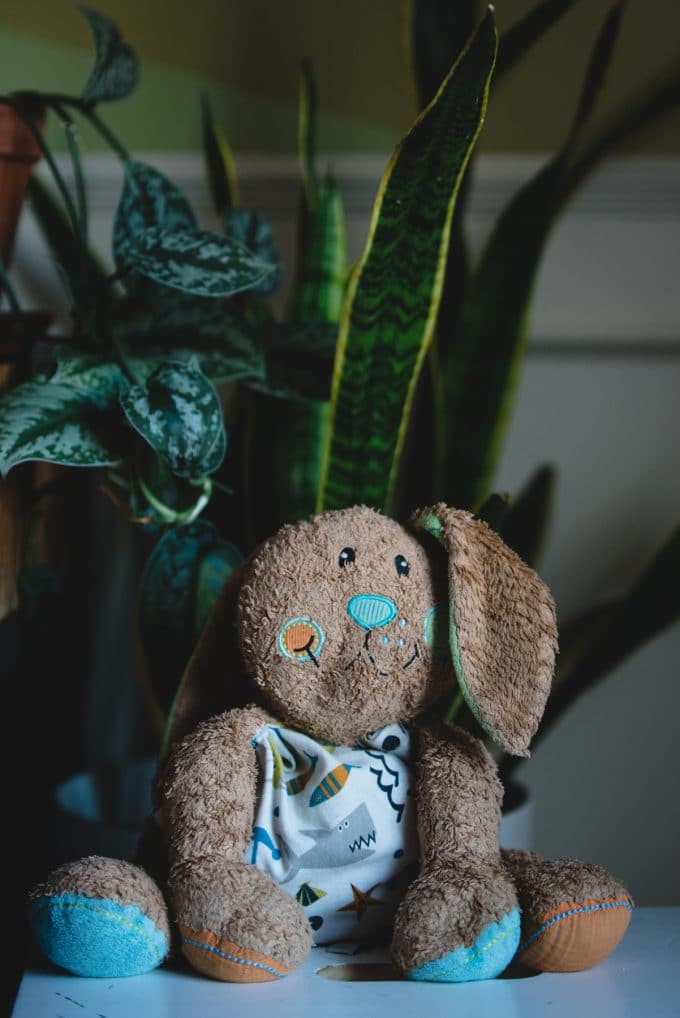
What is depth of field in photography examples
Shallow depth of field
Notice in these next few photos how the subject is in focus but the majority of the rest of the photo is not sharp. This is showing narrow or a shallow depth of field.

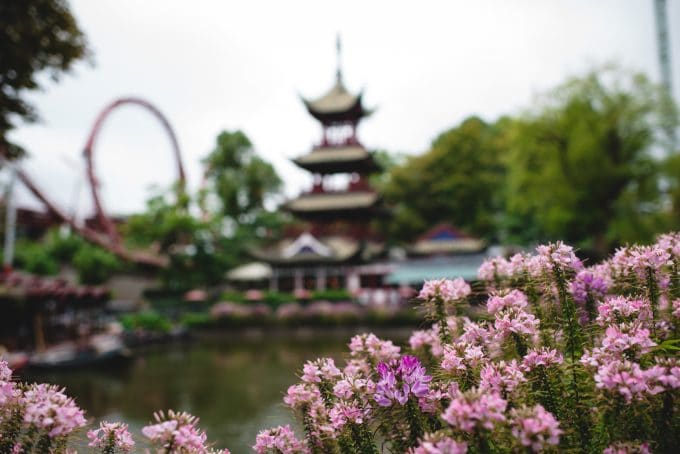
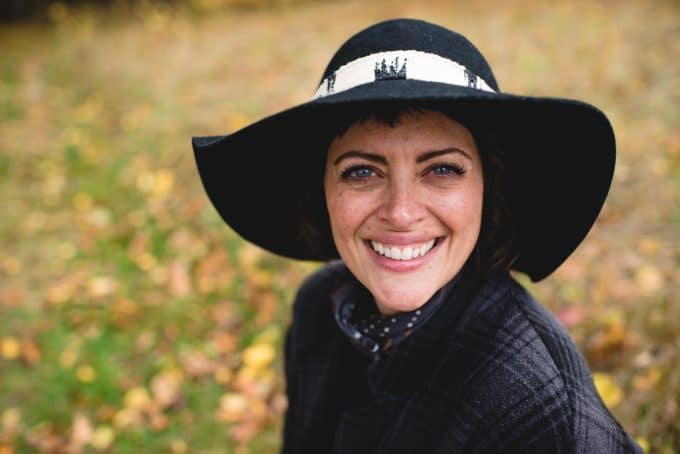
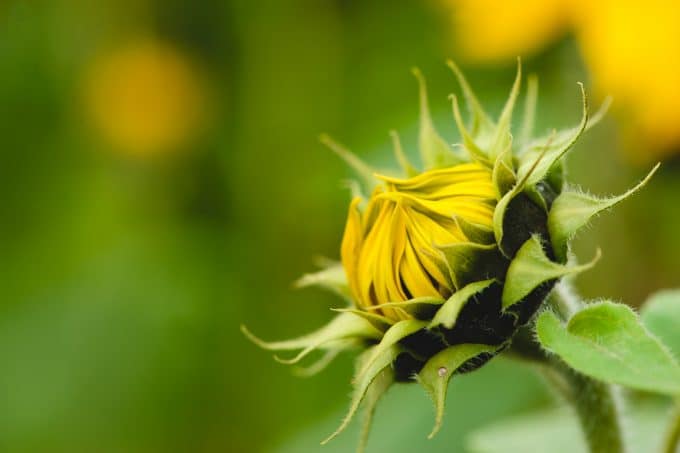
Deeper depth of field
In the next few examples below you will see a deeper depth of field. Most of these images are sharp and in focus.
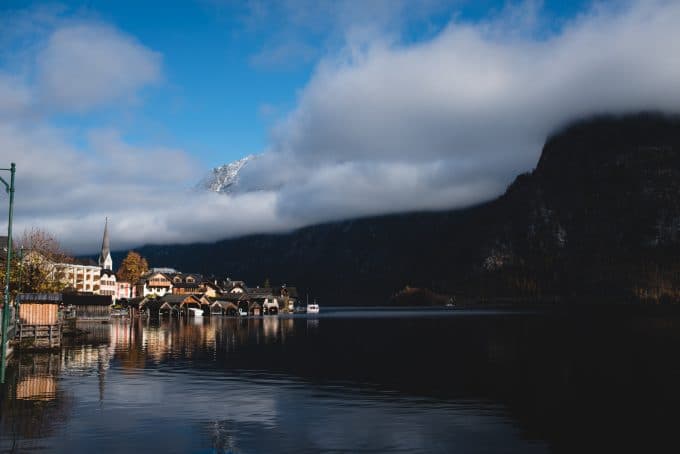

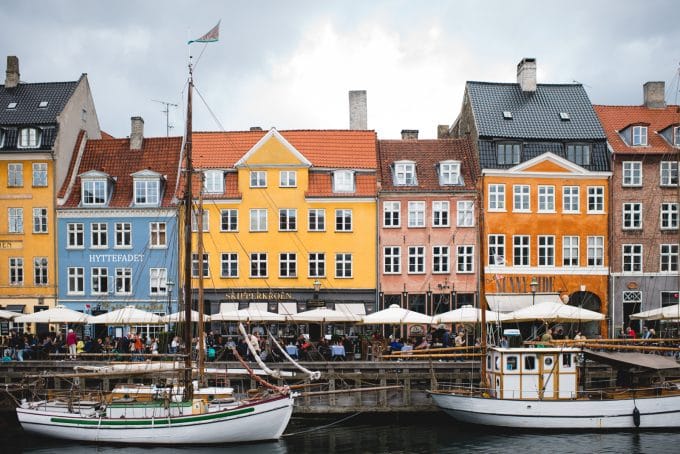
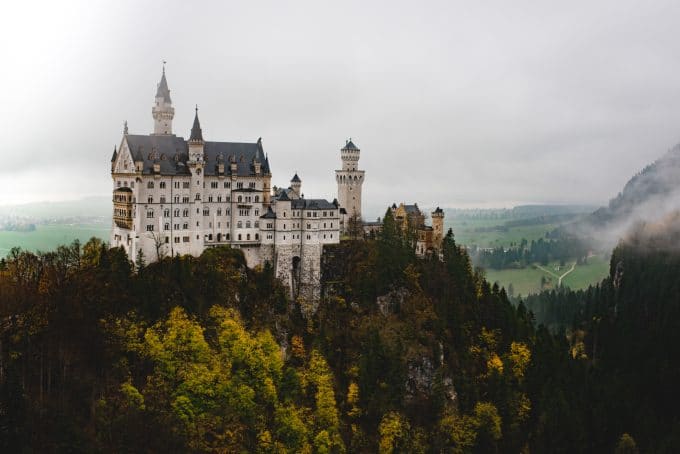
Depth of Field FAQs
Understanding DOF will allow you to add interest in your photos. If you want your subject to really pop you need to know how to create a shallow DOF. If you want your whole image in focus, like in landscape photography, you will need to create a deeper DOF.
The distance that is sharp around your focus point. Shallow DOF means not much of your image other than your subject is sharp. Deep DOF means a lot of your image other than your subject is sharp.
Aperture, focal length, and distance from your subject. Using a combination of those 3 things you can create exactly what you need.
I hope after reading this you have a better understanding of depth of field. Now go get your camera out and experiment with DOF.
Do you have a favorite DOF style or are you like me and love both shallow and deeper depth of fields?
Read more:
Creating Depth in Your Images
How Focus Stacking Will Help You Create Shaper Photos
11 Composition Rules to Know to Improve your Photography
Why a Wide Angle Lens Will Be Your New Favorite Lens







Merci,
That was great explanation of DOF. As a beginner, this was tremendously helpful, especially with the examples.
again, thanks!
Hi! wonderful article today. Is there any chance you could post the same pics of your “studly” husband with the 50 mm and 85 mm with the same camera settings, to see the difference? Can you tell I’m an an amateur? LOL
Hi Cinnamon Wolfe,
Seriously nice write up on DOF!
I know a lot of people who initially struggle with getting a grasp on aperture and depth of field especially when starting and and you have laid out it nicely in this article.
I’m not really sure what James (the above commenter) is talking about as he really doesn’t elaborate what he takes issues with in regards to this article.
The only thing that confuses me is the area where you talk about sensor sizes where it seems that you may be contradicting your own argument by stating:
Sensor Size: “I believe this has the least impact on depth of field” and then you state “Changes in DOF depend on whether you use a crop or full frame;”
It could be that I’m just reading it wrong though?
Either way your article is still nicely written!
Hey Adam! Thanks for the comment. To clarify sensor size does affect depth of field, but since most people use one camera consistently (and thus one sensor size) I didn’t want to go into too much detail about how changing sensor size affects DOF. That subject could be a whole article on its own but since most readers of this particular blog probably don’t switch between full frame and crop, I felt it was the least important factor to discuss. Hope that makes more sense! Thanks for asking!
Sweet commentary on the hubs in between the technical info!